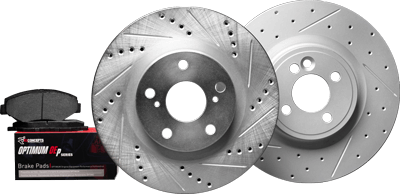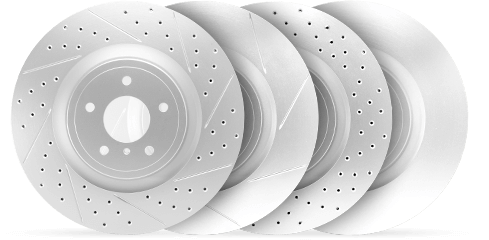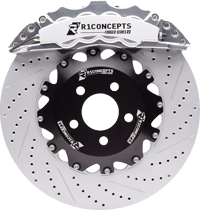How does the brake system work? If you are new to automobiles and is someone who wants to understand how brakes work, this article will help you. Exclusively written by R1 concepts, the best OEM brake pad brands in the market.
Key Takeaways
Hydraulic brake systems utilize brake fluid to transmit and multiply the force from the brake pedal through hydraulic pressure, requiring critical components such as the master cylinder, brake booster, and lines along with anti-lock braking system tech to enhance safety and reduce stopping distance.
Two main types of brakes used in vehicles are disc brakes, which feature better cooling and stopping performance, and drum brakes, which are less expensive and more suitable for wet conditions or off-road use.
Regular maintenance of the brake system is essential to ensure its proper function, with components like brake pads and shoes needing periodic replacement, parking brakes requiring adjustments, and an active vigilance for signs of system issues such as warning lights, spongy brakes, or fluid leaks.
The Basics of Brake Systems: History And Mechanics
Before we explain the basics of the brake system, let’s go into a brief history first.
The history of car brakes dates back to the late 19th century when the first crude braking systems were used on horse-drawn carriages. This rudimentary system evolved into mechanical drum brakes, which were widely used in the early 20th century.
The significant development came in 1918 when Malcolm Loughead (later Lockheed) developed the hydraulic brake system, which used fluid to transfer force from the brake pedal to the brake shoes. This system was further refined and became the standard due to its enhanced safety and efficiency. Disc brakes were introduced in the 1950s and offered better stopping power and heat dissipation, leading to their dominance in modern vehicles.
Over the years, technological advancements have led to the integration of electronic systems like the Anti-lock Braking System and electronic brake force distribution (EBD), which have greatly improved vehicle safety and control.
With that said, here are the current parts of the brake system and their functions.
Hydraulic Pressure
We find that when the brake pedal is depressed, it causes pistons in the master cylinder to create a pressure surge. This pressure propels the brake fluid toward the calipers. The hydraulic system is designed to magnify the force from the driver’s foot; a modest 70 pounds of force on the pedal can be exponentially increased, resulting in effective and powerful deceleration and stopping of the vehicle.
Brake Fluid
The brake system relies heavily on the brake fluid to efficiently convey the force from the brake pedal to each wheel’s brakes. The functionality of this system hinges on using a fluid that maintains its non-compressible state and avoids vaporization even under elevated temperatures within the hydraulic braking mechanism.
It is critical to understand that when converting pedal force into fluid pressure, it is indeed this very pressure in the brake fluid which triggers calipers into action, producing friction required for halting or decelerating the vehicle.
Force Conversion
Braking involves more than just hydraulic pressure and brake fluid. At the core of the braking process is the transformation of mechanical energy into heat through friction. This happens when brake pads exert a frictional force onto either the wheels or a rotor, thereby changing the kinetic energy from your moving vehicle into thermal energy.
Subsequently, this produced heat is released into the surrounding air, which helps to cool down the brake system so it can continue operating effectively.
Types of Brakes: Disc and Drum
There are two primary forms of brake systems that are prevalent in modern vehicles: disc brakes and drum brakes. Disc brakes boast better performance compared to drum brakes, mainly because they dissipate heat more efficiently, which reduces the likelihood of experiencing brake fade.
Conversely, drum brakes are frequently utilized on the rear wheels of many vehicles due to their affordability and straightforward architecture. This makes them an appropriate option for specific applications despite being less favored than disc brakes.
Disc Brakes
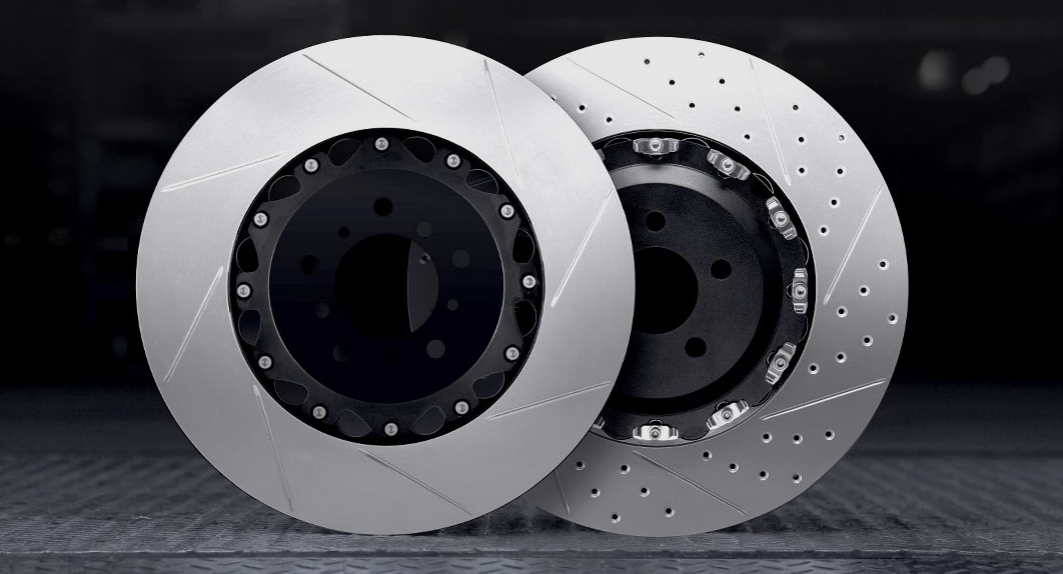
In disc brake systems, the assembly includes a caliper, a brake disc, and the brake pads. Upon depressing the brake pedal, an increase in hydraulic pressure is produced by the master cylinder’s piston. This pressurized fluid then flows through lines into the calipers, which forces the pads against the rotor to create friction that slows down or stops your vehicle. Conversely, drum brakes involve several distinctive parts such as wheel cylinders working in tandem to serve this same purpose.
It’s worth mentioning that compared to their counterparts—drum brakes—disc brakes excel with superior stopping capabilities and faster cooling times after use. Features critical for minimizing risks of performance degradation known as ‘brake fade’ under continuous application of braking force.
Drum Brakes

In contrast to disc brakes that utilize pads, drum brake systems make use of brake shoes which generate friction by pressing against the interior of a rotating drum. Drum brakes might not provide the performance level synonymous with disc brakes, but they offer their unique set of benefits.
Their production and upkeep costs are typically lower.
They exhibit enhanced resistance to water and contaminants, proving advantageous in off-road or damp scenarios.
Self-adjustment is a feature inherent in them, reducing the need for regular maintenance.
During extended periods of application, they demonstrate a reduced tendency towards brake fade.
Specifically speaking about cost-effectiveness and simplicity within its design structure makes them an attractive option. This is particularly true for outfitting on vehicle rear wheels where traditional steering wheel-related braking systems might be considered as alternatives.
Key Components of Brake Systems
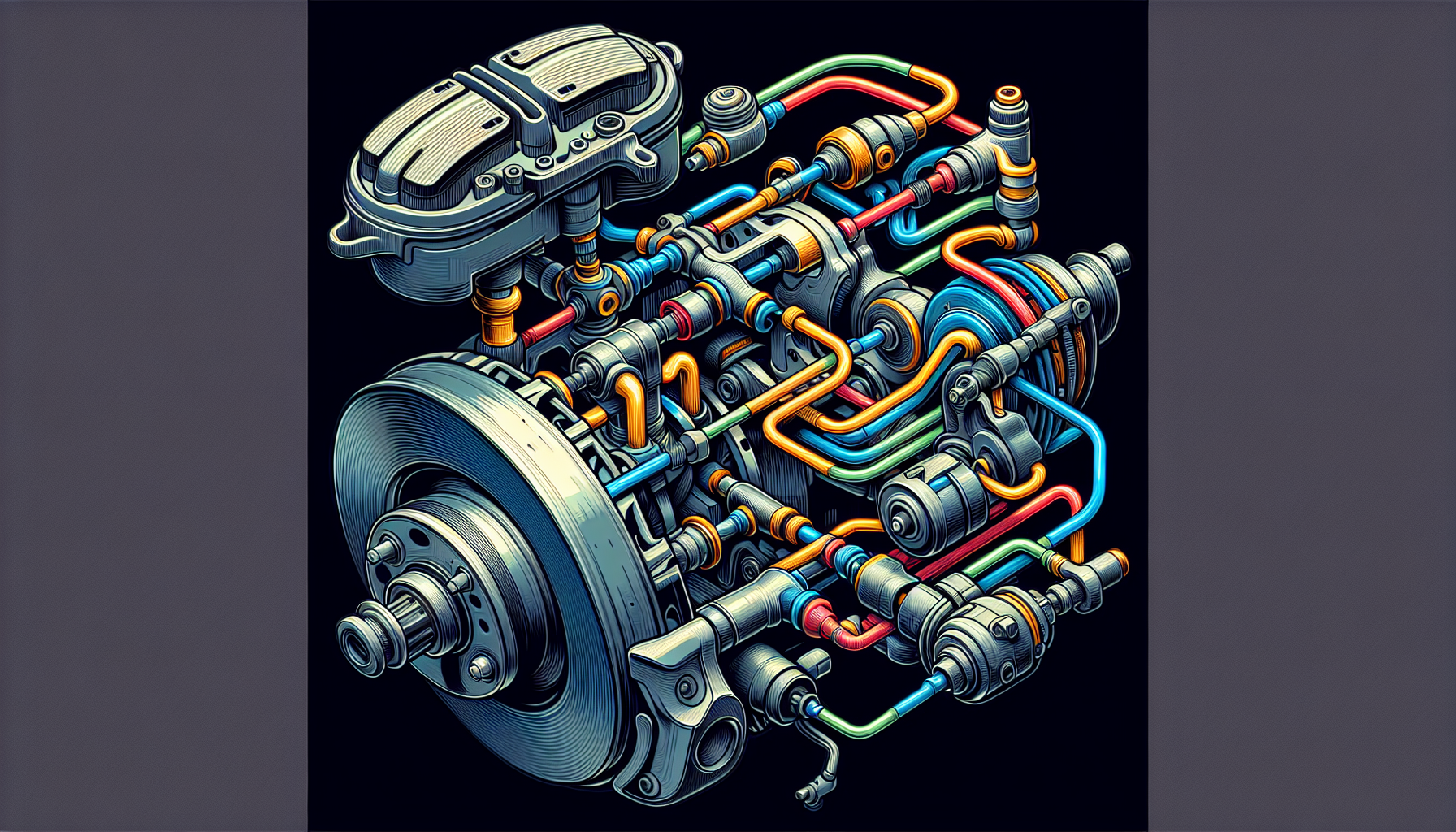
Understanding the essential elements of brake systems is crucial, and these key parts are:
The master cylinder that generates hydraulic pressure upon depression of the brake pedal
The brake booster which amplifies the force exerted on the brake pedal to aid drivers
The network of hoses and brake lines responsible for conveying hydraulic fluid from the master cylinder directly to each wheel’s calipers or wheel cylinders.
Master Cylinder
Acting as the core component of the hydraulic brake system, the master cylinder transforms the force exerted by a driver’s foot into hydraulic pressure. This pressure is then channeled through ports that connect to brake lines, leading to activation of the brake pads. These pads generate the necessary friction required to accelerate the vehicle. The setup within a typical master cylinder assembly encompasses a reservoir for containing brake fluid and a piston assembly essential for this process.
Brake Booster
The brake booster, a crucial part of the brake system, functions with minimal manual input. Its primary function is to enhance the force that drivers apply to the brake pedal by utilizing vacuum pressure, thus greatly diminishing the physical strength required by drivers when pressing on the brake pedal.
Brake Lines and Hoses
The conduits of the brake system, akin to arteries within a body, are the brake lines and hoses. They carry out the vital function of moving brake fluid from the master cylinder all the way to each wheel’s calipers or wheel cylinders. To meet various demands across different segments of the braking system, they’re fashioned using robust materials like double-walled steel tubing as well as multi-layered rubber and synthetic blends.
To maintain a reliable and effective braking system, it is critical that these brake lines and hoses undergo frequent checks for any signs of wear or damage.
Brake Pads, Shoes, Rotors, and Drums
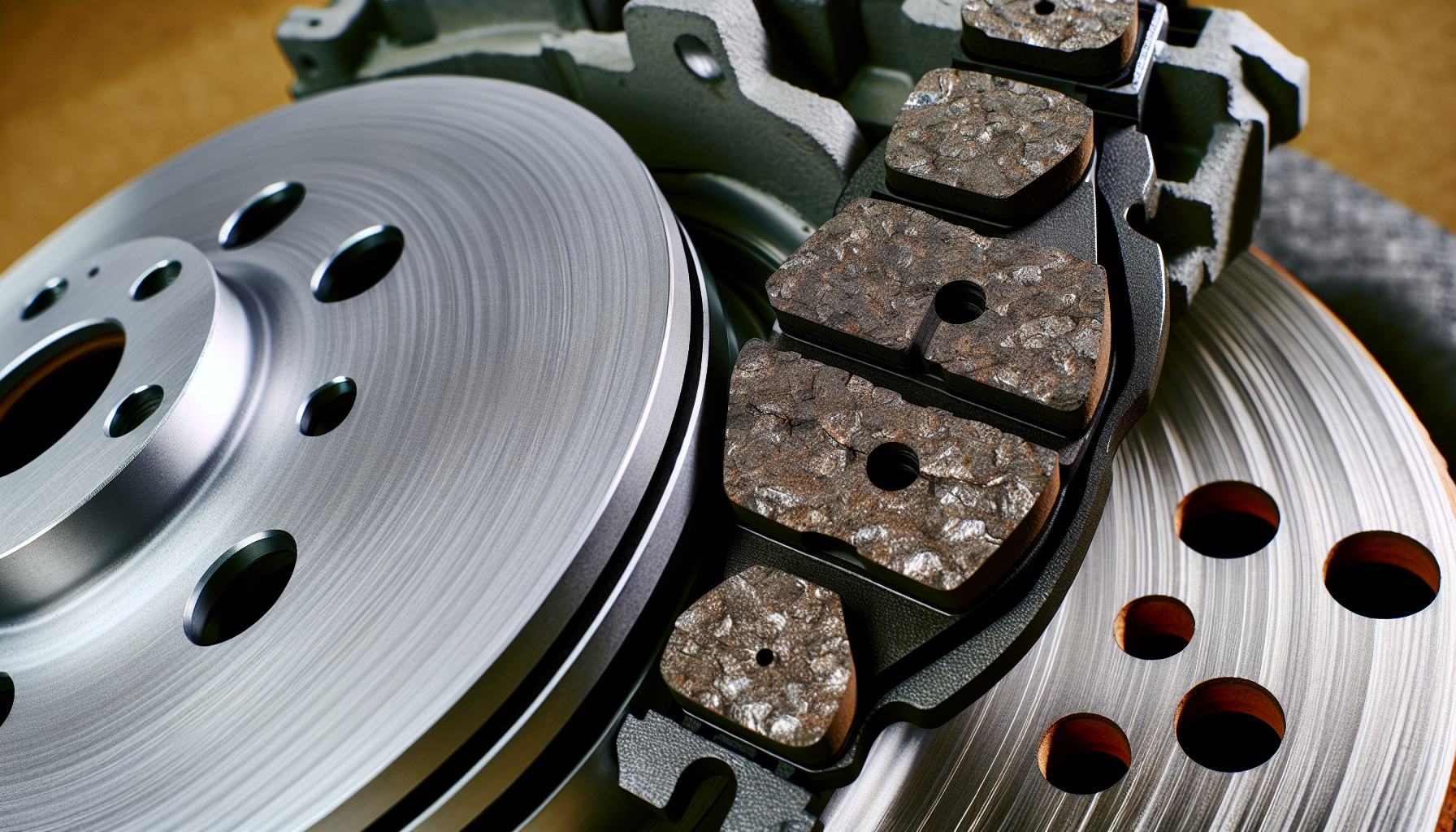
Let’s explore the elements that cooperate closely with both the hydraulic system and mechanical parts: brake pads, shoes, rotors, and drums. The brake pads are utilized in disc brake systems as friction materials while shoes serve this purpose within drum brakes. These components engage with either the rotors or drums (depending on their respective systems) to produce braking action when they apply pressure during a stop.
Brake Pads and Shoes
In both disc and drum brake systems, the primary function of brake pads and shoes is to facilitate braking by creating friction. Brake pads in a disc brake system are composed of a steel backing plate topped with friction material. These get compressed against the rotating disc via the caliper, aiding in slowing down or stopping the vehicle. Conversely, for drum brakes, it’s the brake shoes that generate necessary friction when they make contact with the interior surface of a revolving drum.
Due to their critical role in producing friction required to brake, both types—brake pads for disc brakes and shoes for drum brakes—are subject to wear over time and need periodic replacement as part of regular vehicle maintenance.
Brake Rotors and Drums
In disc brake systems, the act of pressing down on the brake pedal leads to the compression of brake pads against a rotor. This action generates friction required to slow down and eventually halt a vehicle. Rotors are sometimes designed with drilled or slotted patterns that aid in shedding heat more efficiently during this process. They also facilitate swift removal of water, gas, and debris from the surface.
Conversely, drum brakes may experience several problems including delayed drying times after exposure to moisture, overheating which can lead to ‘brake fade’, as well as potential distortion under certain conditions.
Anti-lock Braking System
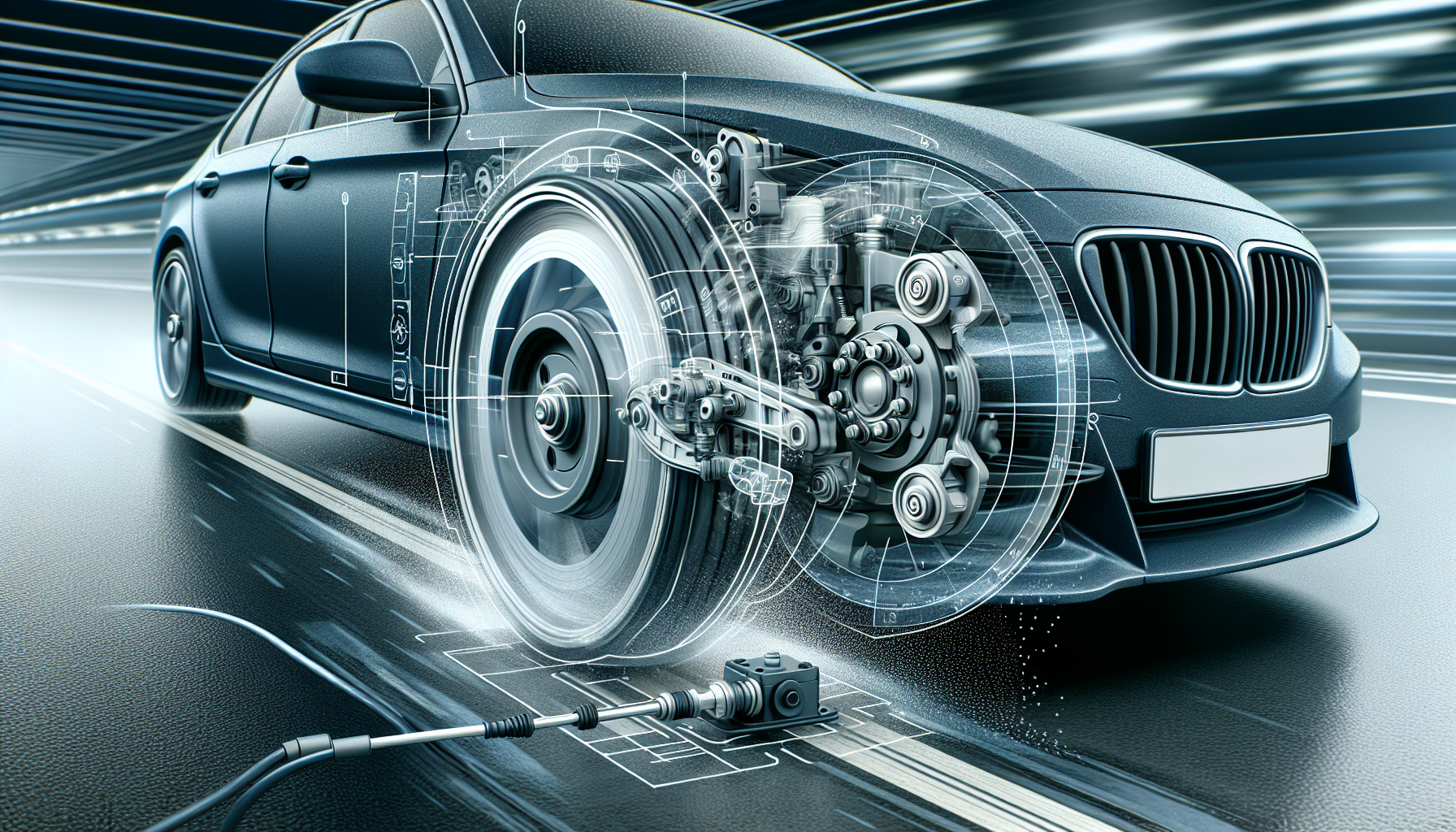
Exploring the complexities of braking systems reveals significant technological improvements, notably the Anti-lock Braking System This innovation aims to stop wheels from locking up during vigorous brake application, which could lead to skidding and a loss of vehicular control.
Especially under conditions such as emergency stops on slick or damp roads, Anti-lock Braking System plays a crucial role in ensuring that control over the vehicle is preserved, thereby boosting overall safety.
How Anti-lock Braking System Works
How does the Anti-lock Braking System function, you may wonder? The anti-lock brake system is comprised of a central electronic control unit (ECU), sensors that measure the speed of each wheel, and hydraulic valves integrated within the braking apparatus. These sensors monitor whether the wheels are speeding up or slowing down and convey this information to the ECU which then adjusts the pressure applied to brakes accordingly.
This mechanism allows motorists to retain command over their vehicle even in instances where they must apply forceful pressure on their brakes.
Benefits of Anti-lock Braking System
Anti-lock Braking System confers a multitude of advantages. It plays an instrumental role in diminishing the incidence of accidents, notably during urgent braking scenarios where maintaining steering control is vital. It lessens the likelihood of mishaps involving pedestrians, cyclists, and wildlife.
Anti-lock Braking System facilitates better command over the vehicle and may reduce braking distances on roads that are slick or moist.
Parking Brake Mechanism
The parking brake, a vital but frequently neglected element of brake systems, must not be overlooked. As an autonomous supplementary braking system, it operates separately from the main hydraulic brakes of the vehicle.
This component is especially essential for ensuring that a vehicle remains stable when parked on slopes or during emergency situations.
How Parking Brakes Work
Have you ever been curious about the functioning of parking brakes? When you activate a lever or pedal, it tugs on steel cables which in turn engage the rear brakes. This process is distinct from the hydraulic brake system and ensures reliable stationary vehicle stability, especially on inclines.
Uses and Maintenance
Similar to every part of the brake system, consistent upkeep and fine tuning are essential for the parking brake’s optimal operation and durability.
To adjust the parking brake effectively:
Release the jam nut to allow movement within the cable.
Use the adjuster to take up any looseness in the cable.
Following these adjustments, it is important that while disengaged, there is no obstruction in spinning of rear wheels, yet they should be firmly stationary when a parked state with an engaged brake is desired.
Signs of Brake System Issues
Even though the brake system is a remarkable feat of engineering, it’s not immune to problems that can affect its performance. Several warnings, such as an activated parking brake, worn-out brake pads or hydraulic issues, may be indicated by alert lights.
If there is damage to the brake hoses or lines, this could severely compromise the effectiveness of the braking system and potentially lead to its failure.
Warning Lights and Sounds
Warning lights and audible alerts are critical indicators of potential issues within the brake system. The illumination of a brake service warning light could point to several problems, such as a parking brake that requires adjustment, brake pads that are worn down or hydraulic difficulties.
If you hear squeaking or squealing sounds when braking, this is often an indication that your vehicle’s brake pads have deteriorated and should be replaced promptly.
Physical Symptoms
Manifestations such as a soft or spongy feeling when using the brakes could signal the presence of air or moisture within the brake system, or point to issues with the master cylinder.
Should there be an evident reduction in the level of brake fluid, this may indicate a leak within the system that can undermine both braking performance and overall safety of your vehicle.
Summary
In summary, grasping the intricacies of a vehicle’s brake system goes beyond simply recognizing the impressive engineering feat that enables a vehicle to halt. It entails being an educated motorist who is aware of potential issues and ensures their vehicle’s braking mechanism is properly maintained for peak functionality and security.
Frequently Asked Questions
What are the 3 brake system?
Modern cars are equipped with three primary brake systems: frictional, electromagnetic, and hydraulic.
Included within the air brakes category are service brakes, as well as parking and emergency brake systems.
What is the physics of the car brake system?
Utilizing friction, the brake system in a vehicle transforms kinetic energy into thermal energy. This process creates resistance against motion and generates heat, which consequently halts the vehicle.
What is the role of the master cylinder in a brake system?
Upon pressing the brake pedal, hydraulic pressure is generated by the master cylinder, which then propels brake fluid through the brake lines towards the calipers and wheel cylinders. This action enables effective operation of the brakes at each wheel when you need to accelerate or halt your vehicle.
What is the difference between disc brakes and drum brakes?
In summary, for applications where performance is key, disc brakes are favored owing to their rapid cooling capabilities and ability to resist brake fade. Conversely, drum brakes offer a more economical option and are typically found on the rear wheels.
The knowledge of how disc brakes differ from drum brakes can enhance your comprehension regarding these two types of braking systems.
How does the Anti-lock Braking System work?
By utilizing a central electronic control unit (ECU), along with wheel speed sensors and hydraulic valves, Anti-lock Braking System regulates brake pressure to prevent the wheels from locking up during intense braking scenarios. This contributes to preserving steering capability and vehicular stability.


